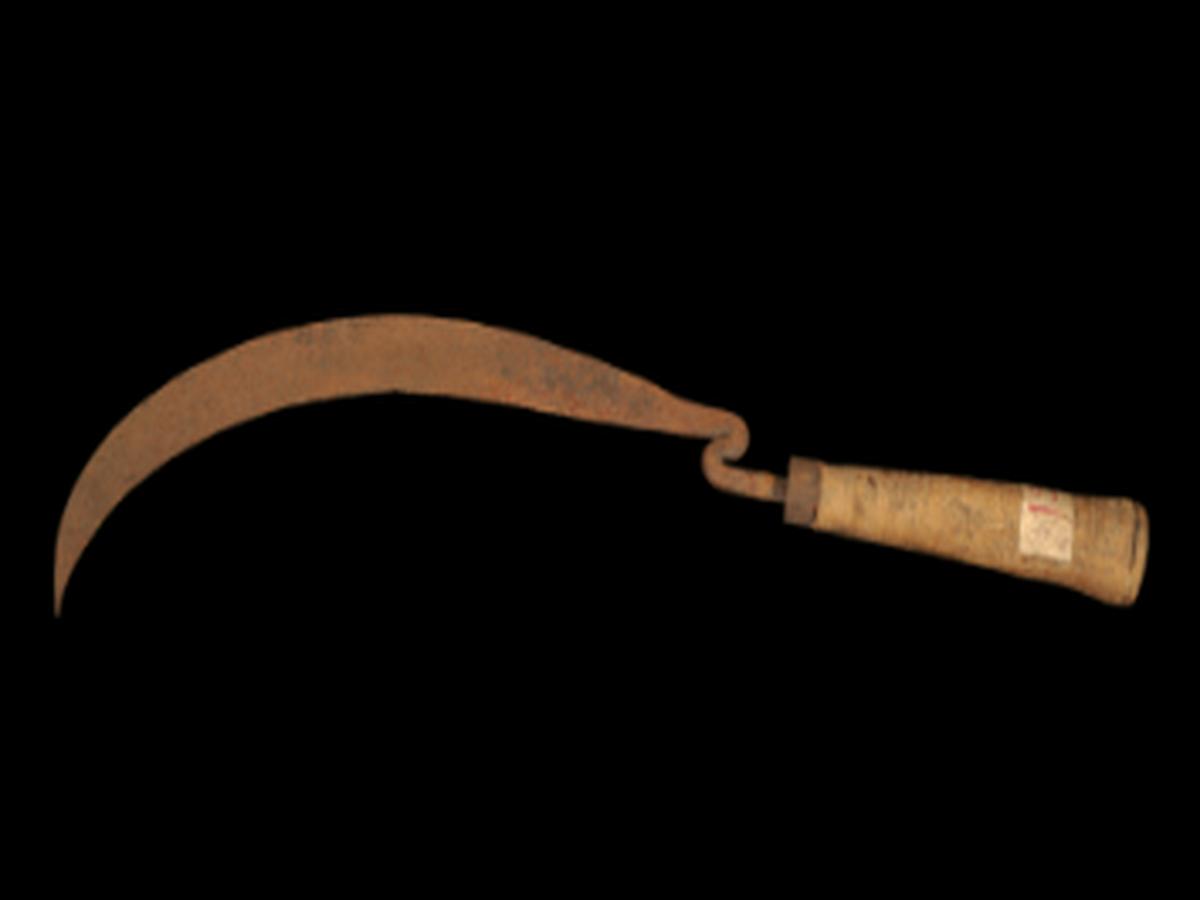State
Tribe Name
Art Type
short description
This sickle was historically used for ceremonial purposes in the agriculture of the Santali people. Irreversibly, it is today lying at the Indian Museum, Kolkata in a state whereby it does not serve any purpose; it is as important an item as it illustrates into the aesthetic sensibilities.It has quite an amazing aspect in any one surface of iron blade, especially that it has engravings as if describing to the people the inherent understanding that ornamentation is even for their most fundamental processing tools. A short peculiar 'Z' shaped tang has been welded to the iron blade and fits into the wooden handle with an iron ferrule ensuring the use of the tool is durable. The ring-like carved design adds to the grip and looks of the wooden handle.
Thumbnail

Filter Postion
Left
Filter Background
Off
Theme
Filter Header Image

content
Image

description
A beautifully crafted crescent-shaped sickle
This sickle was historically used for ceremonial purposes in the agriculture of the Santali people. Irreversibly, it is today lying at the Indian Museum, Kolkata in a state whereby it does not serve any purpose; it is as important an item as it illustrates into the aesthetic sensibilities.It has quite an amazing aspect in any one surface of iron blade, especially that it has engravings as if describing to the people the inherent understanding that ornamentation is even for their most fundamental processing tools. A short peculiar 'Z' shaped tang has been welded to the iron blade and fits into the wooden handle with an iron ferrule ensuring the use of the tool is durable. The ring-like carved design adds to the grip and looks of the wooden handle.
It clears and cuts with serrated edges through the stalks of plants. This sickle is a mike made by the tribal blacksmiths from what material resources are at hand, testimony to the fact that these people are as resourceful as they are skillful, with their relations to land properly deepened and ever-thriving.The Santal tribes are primarily distributed in the states of Jharkhand, West Bengal, Odisha, and Bihar. They perhaps are the poorer of all people because they totally depend on cultivation in these areas. This sickle is mostly intended for lifting crops, cutting grasses, and preparing them for harvest; even the lives and language of this community bear such customs through the ages within tribal tradition.
This sickle was historically used for ceremonial purposes in the agriculture of the Santali people. Irreversibly, it is today lying at the Indian Museum, Kolkata in a state whereby it does not serve any purpose; it is as important an item as it illustrates into the aesthetic sensibilities.It has quite an amazing aspect in any one surface of iron blade, especially that it has engravings as if describing to the people the inherent understanding that ornamentation is even for their most fundamental processing tools. A short peculiar 'Z' shaped tang has been welded to the iron blade and fits into the wooden handle with an iron ferrule ensuring the use of the tool is durable. The ring-like carved design adds to the grip and looks of the wooden handle.
It clears and cuts with serrated edges through the stalks of plants. This sickle is a mike made by the tribal blacksmiths from what material resources are at hand, testimony to the fact that these people are as resourceful as they are skillful, with their relations to land properly deepened and ever-thriving.The Santal tribes are primarily distributed in the states of Jharkhand, West Bengal, Odisha, and Bihar. They perhaps are the poorer of all people because they totally depend on cultivation in these areas. This sickle is mostly intended for lifting crops, cutting grasses, and preparing them for harvest; even the lives and language of this community bear such customs through the ages within tribal tradition.
Image Mode
landscape
promoted
On
Verified
Off
